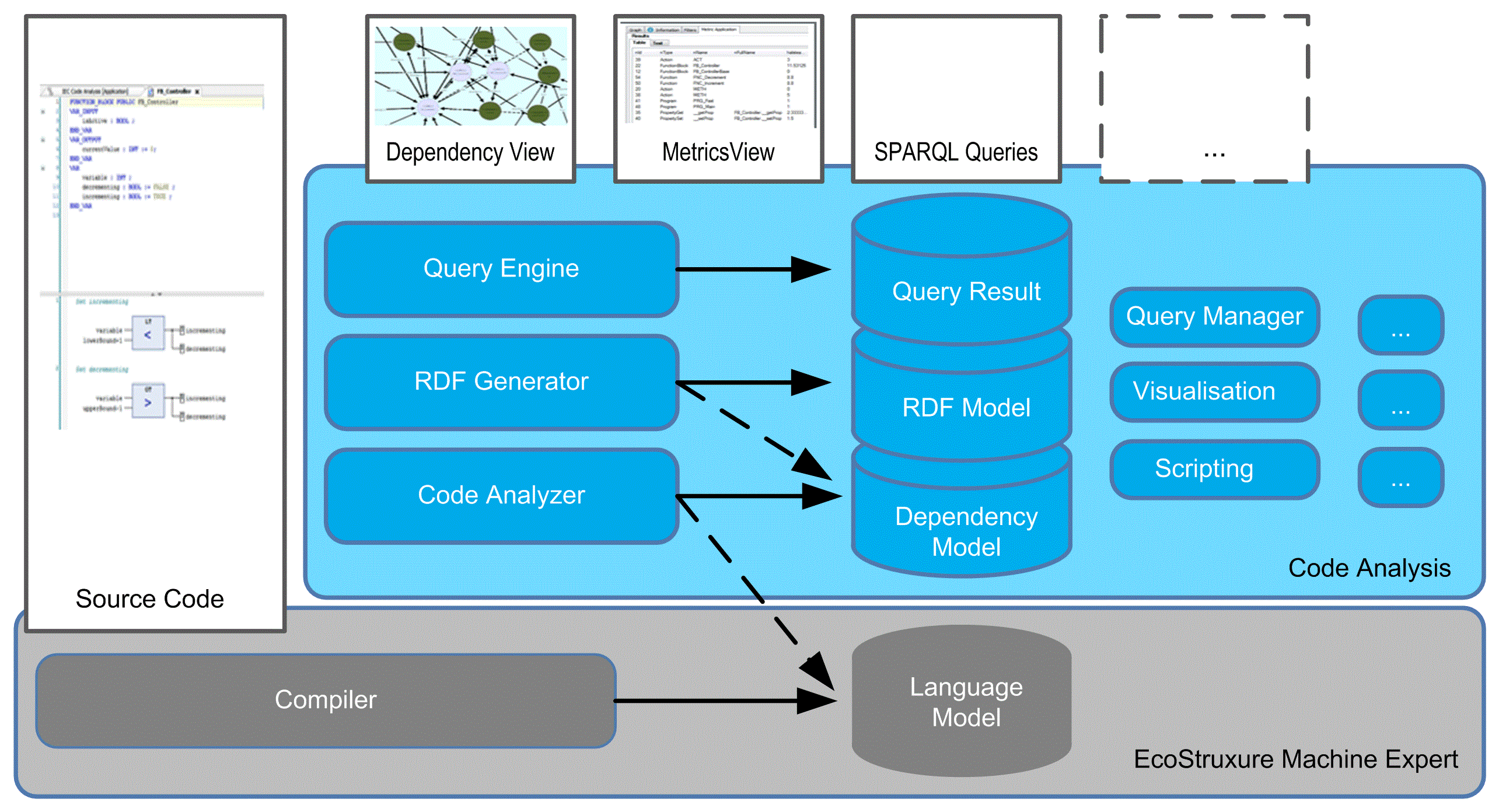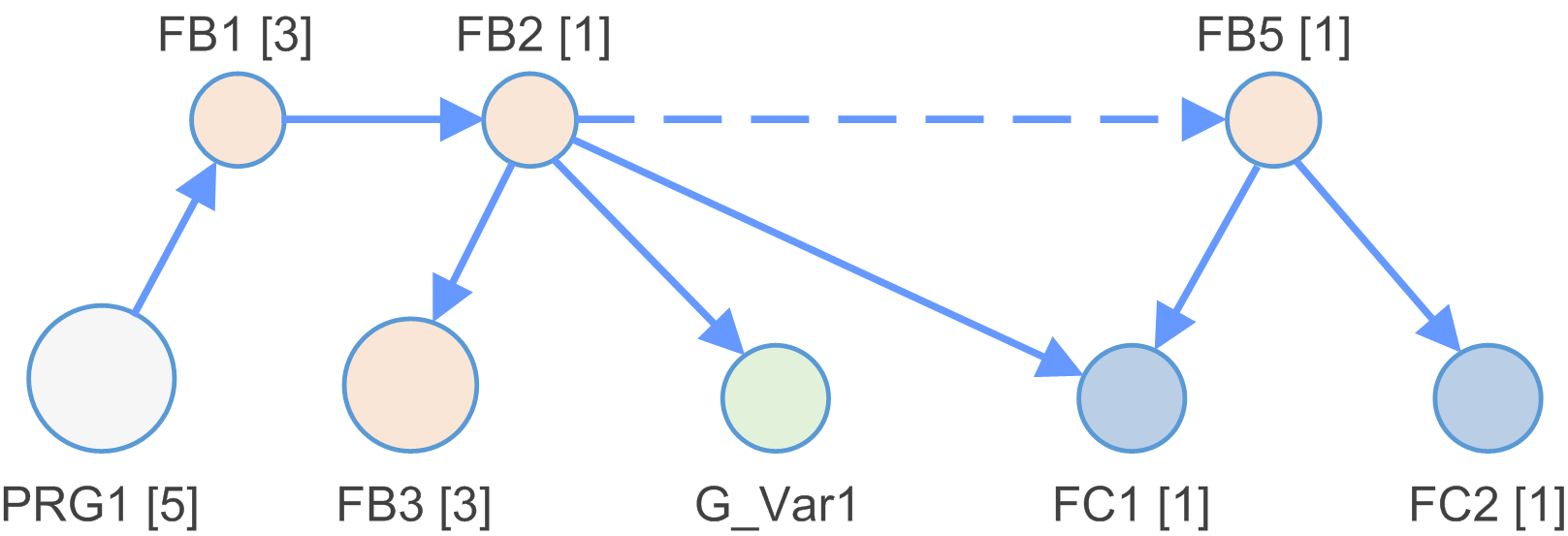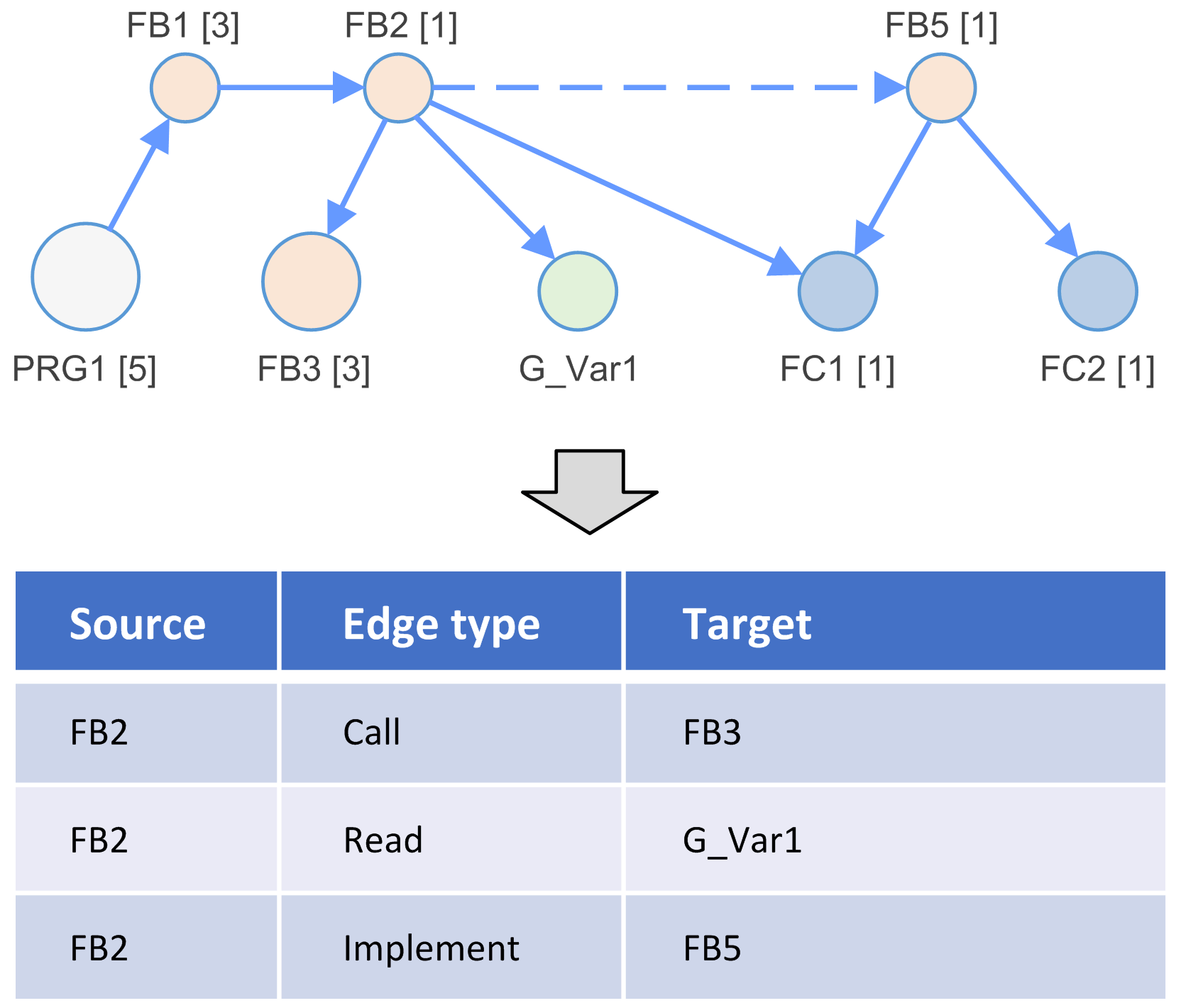Concept of Code Analysis
Overview
This chapter gives an overview on the concepts of Code Analysis as integrated into EcoStruxure Machine Expert.
Software Components of Code Analysis
The diagram gives an overview of the high-level software components of Code Analysis:

The components can be categorized into three different types:
-
UI components displaying data:
-
Editors to write the source code.
-
Editors to visualize the results like metrics or conventions, or a graphical representation of the source code structure.
-
-
Data models as input or output of other components:
-
Language model
-
Dependency model
-
Resource Description Framework (RDF) model
-
Query results
-
-
Components transforming data:
-
The source code compiler (with language model as output) processes the source code to check the syntax and build the language model to generate the executable code running on controllers.
-
The source code analyzer (with dependency model as output) analyzes the language model and transforms it into a dependency model (and keeps it up-to-date).
-
The RDF model generator (with RDF model as output) transforms the dependency model into an RDF model to build the bridge to the semantic Web technologies.
-
The Query execution engine (with query results as output) executes SPARQL queries on the RDF model to get the query results.
-
Analysis Data (Dependency Model) Concept
The application is analyzed and a dependency model is built.
The dependency model is a list of nodes connected via edges.

Examples of node types:
|
Node type |
Description |
|---|---|
|
Function block |
Function block (FB) inside the dependency model. Created for every function block added to the EcoStruxure Machine Expert project. |
|
Program |
Progam (PRG) inside the dependency model. Created for every program added to the EcoStruxure Machine Expert project. |
|
Function |
Function (FC) inside the dependency model. Created for every function added to the EcoStruxure Machine Expert project. |
|
... |
... |
Examples of edge types:
|
Edge type |
Description |
|---|---|
|
Read |
Read operation from code as source to a variable node as target. |
|
Write |
Write operation from code as source to a variable node as target. |
|
Call |
Call of a function block, method, action, program, and so on, from the code as source to a target node. |
|
Extend |
Extension of a basis type. For example, FB extension by another function block. |
|
... |
... |
Semantic Web Technologies
The open and flexible code analysis feature is based on semantic Web technologies. Some of these technologies are:
-
Resource Description Framework (RDF) - RDF Model
Refer to https://en.wikipedia.org/wiki/Resource_Description_Framework.
-
RDF Database (Semantic Web Database) - an RDF Triple Storage
-
SPARQL Protocol and RDF Query Language - SPARQL.
Refer to https://en.wikipedia.org/wiki/SPARQL.
Dependency Model to RDF Model Synchronization
The dependency model is the result of a code analysis run.
To link up to an open, flexible code analysis feature with query language support, the dependency model is synchronized with an RDF model.

RDF Triple Storage
To support the analysis of large projects, the RDF model is kept in a separate process called .
By default, the is used. If required, the behavior can be configured in the .
SPARQL and RDF
Resource Description Framework (RDF) is a data model for describing resources and the relations between these resources.
Example:
|
:(Subject) |
:(Predicate) |
:(Object) |
|---|---|---|
|
|
|
|
|
|
|
|
|
|
|
|
SPARQL is an acronym for Sparql Protocol and RDF Query Language. The SPARQL specification (https://www.w3.org/TR/sparql11-overview/) provides languages and protocols to query and manipulate RDF graphs - similar to SQL queries.
Example of s simple SPARQL query to get the node Ids and their names of the function blocks of an RDF model:
SELECT ?NodeId ?Name
WHERE {
# Select all FunctionBlocks and their names
?NodeId a :FunctionBlock ;
:Name ?Name .
}